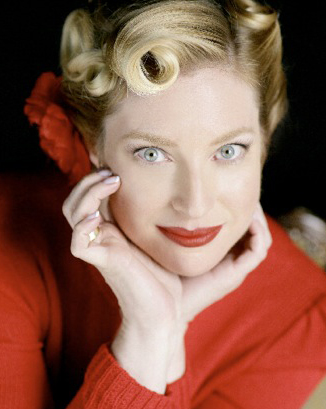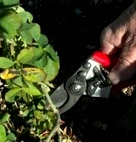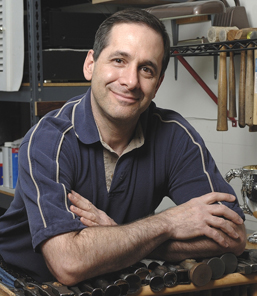
The Modern Butlers’ Journal volume 11, issue 12
International Institute of Modern Butlers
 Message from the Chairman
Message from the Chairman
I came across an article recently that we had missed three years ago: What the Butler Did, The super-rich are paying a fortune to re-create a model of domestic service that never really existed. The author references examples of butler indiscretions and ask, “Why would anyone employ a butler if he can’t be relied on not to commit indiscretion?” Good question!
He then goes on to talk about butlers murdering their employers (but is unaware of the example immediately below of Mr. Hall).
Next, he discusses how British butlers in reality were drawn from the lower classes, and not from the middle or upper classes, as is promoted by the character of Jeeves (a valet rather than a butler). This used to be true, but is not today, even if it mattered.
The author claims that butlers have never been the soul of discretion and today, are only so because they are paid so much.
Overall, quite a jaundiced and inaccurate view of the profession and motivations of butlers, other than the few exceptions from which the author draws his conclusions.
As with all professions, butlers have to respond to changing demographics, realities, tools, environments, and employer/market demands—including diversifying from serving just in private service, and serving employers from countries other than England or Europe.
At the same time, we have to retain what is central to the profession and resist the temptation to respond to demands by the uneducated to cut corners, lower standards, or redefine the profession for whatever reasons.
We are muddling our way through in a turbulent world, and overall, deserve a better report card than that afforded by this article!
We wish you a Happy Holiday Season, for those who celebrate it, and a successful month for those who do not.
Butlers in the Media
An extraordinary tale of skulduggery by a 20th century con man and petty thief in England, Archibald Thomson Hall, who pretended to be a butler and from that position, stole from his employers and ended up murdering five people, including two of his employers. Only one of his employers, a Lady Hudson, was sharp enough to spot him as a fraud, firing him. The rest could have used some understanding of not only butlers, but Man in general, because they fell for the smooth talking and failed to spot the real nature of Hall.
Just one example this month of a product or service riding on the coat tails of our profession: A “towel butler” — being a dumb valet for towels.
An article canvassing several cruise-line butlers on the services they offer, showing a step-up in services offered in the absence of butlers in the crew, and which could be improved even further.
Continuing our promotion last year of an internship opportunity at Blenheim Palace, this article featuring the head butler there, Mr. Stephen Duckett, will be good news for future internship candidates.
An interesting article on the use of information to customize and make convenient the lives of those we serve, which the author correctly identifies as a basic butler characteristic. She points out that the modern trend of collecting personal information and then bombarding the person with ads, or worse, is not a luxury characteristic nor a quality experience for the individual being served. “We should look for the future of luxury in its past. The world of old luxury involved an actual person delivering impeccable service, and modern luxury should take a cue. This means making the “last mile” as human as possible. The ultimate luxury of both the past and the future is human interaction and all the professional secrecy that goes with it.” Google take note.
Which leads us to the latest of the Chairman’s articles, Would You Like Your Service Today Live or Programmed, Madam? part 1 being published initially by Hotel Business Review magazine in November.
Another one of the Chairman’s articles was also published in November, Love and the New Age of Service, in the International Luxury Hotel Association’s magazine, Luxury Hoteliers.
 This little fellow is another hand-made soap creation customized to the guest by Mr. Gutman, head butler at the Fort Harrison Retreat in Florida. Each advance in his technique and materiel brings him closer to sharing his knowledge and providing a simple way of bringing a smile to the guest’s or employer’s world.
This little fellow is another hand-made soap creation customized to the guest by Mr. Gutman, head butler at the Fort Harrison Retreat in Florida. Each advance in his technique and materiel brings him closer to sharing his knowledge and providing a simple way of bringing a smile to the guest’s or employer’s world.Let’s Talk about Mixology, Part 7
by Amer Vargas
The Strange Story of the Orange Whip
“Who wants an Orange Whip? Orange Whip? Orange Whip? Three Orange Whips!”
Today, we pay tribute to the great (and big) John Candy for his part in the 1980 musical comedy film, The Blues Brothers, where he plays the role of Burton Mercer, a parole officer to Jake (one of the Blues brothers).
When Mercer raids a Blues Brothers concert to arrest Jake, he allows the brothers to complete the concert before making the arrest; so he sits with two state troopers and offers them, and then orders, an Orange Whip.
Where did this vignette come from? The father of the costume designer on the movie film set was the Director of Sales at the Orange Whip Corporation and requested that the director have the drink mentioned in the movie. The director told John Candy of this request, who improvised the whole scene in the movie. This scene made the Orange Whip a classic among both drinks & film aficionados, but not in the way planned by the Orange Whip Corporation.
The Orange Whip that we know today is actually a sweet cocktail that is very easy to make, as all ingredients are mixed in the blender to create a frothy texture and then poured into a Highball or Collins glass filled with ice (or similar). The ingredients and proportions are: 4 oz of orange juice, 2 oz of cream, 1 oz of vodka and 1 oz of rum.
However, Officer Mercer was not referring to this alcoholic beverage when he requested Orange Whip in the movie, but to the Orange Whip Corporation’s non-alcoholic, effervescent orange-flavored beverage that existed in the ’80s and which has since disappeared from the market. While the movie scene catapulted the alcoholic version into prominence, it did not achieve long-term success for the soda version, it seems.
December is here and with it, the time for good wishes for everyone. So, grab your cocktail (or Crush or Fanta, today’s closest versions of the original Orange Whip), play The Blues Brothers, and enjoy the music…
Happy holiday season!
Mr. Vargas is the Institute’s President and can be contacted via AmerVargas @ modernbutlers.com
Of Butlers and Roses, Part 20 of 25
by GJ dePillis
How to Make the Cut (continued)
Last month, we discussed the proper way to cut a stem or rose cane (stems). This article will provides more details on the proper way to prune.
 Remember to hold the secateurs/clippers with the sharp, flat blade (guillotine) below the smaller blade when making a cut;
Remember to hold the secateurs/clippers with the sharp, flat blade (guillotine) below the smaller blade when making a cut;- Cut a stem at a 45-degree angle, with the lower part (heel) of the cut toward the inside center of the plant and the top part (toe) toward the outside of the bush;
- Do not trim too close to the bud: The heel of the cut should be at the same level as the bud, meaning the toe of the cut will be about ½” – ¼” above the bud;
- With a thick tool and measurements in the 1/4”, one might wonder which blade is positioned where; it is simple: the curved blade should be positioned at the toe of the cut, ½” above the bud, on the outer side of the bush/stem;
- Remove skinny and dead canes, as well as those that cross or rub against each other. Rubbing canes can suffer from “friction sores,” which run the risk of becoming infected and so invite insects to lay eggs, or a disease to enter the plant. For this reason, once you have removed a crossing branch that has already caused a sore, you may want to seal it with a drop of Elmer’s Glue—which can be done equally for any cut made on a stem—to discourage insects from boring inside the stem. Each cane should be strong enough to carry the weight of the bloom, or it will sag;
- If the cut is not clean (bits of the bark pull off in your clippers, creating a ragged or jagged edge), then sharpen your tool—torn bark is a sign of a dull tool;
- Trim a hybrid tea shrub bush to about 18-24” off the ground;
- Dead head (remove the old bloom of) a rose on a stem and cut the stem back to an outward facing bud if that bud is part of a 5 to 7 leaf cluster;
- If you see a sucker (a root emerging as a separate plant), cut it off under the soil, at the root that started the shoot. New strong canes can form above any graft line (where a cane has been grafted to a root);
- Look for the graft line at the base of the rose bush and trim all canes starting to shoot from it. You don’t want the hardy root-stock to grow, or it will deplete the energy the plant needs for the top part (above the graft line) to bloom;
- When cutting a “bud union joint” (where four or more branches come out of the same joint) cut flush (flat) against the joint. Sealing it with Elmer’s white glue will prevent it from growing back.
- To grow a rose from a cutting, clip the cutting to an established “shoulder bud” and put that cutting in the ground. Ensure the stem you cut off is long enough to have at least three bud bumps above the ground.
Ms. dePillis is a freelance contributor to the Journal who is based on the West Coast of the United States. She can be reached via depillis at gmail.com
 Consulting the Silver Expert
Consulting the Silver Expert
by Jeffrey Herman
Q: What is weighted sterling?
A: Weighted sterling simply means sterling that has had heavier, base materials added within its form. There are two types of weighted sterling: structurally-weighted (for structural stability throughout) and stability-weighted (so they won’t tip over). Some objects do not require structural or stability weighting, but may be weighted for other reasons, such as the removable leather-covered lead bottom of a cigarette box.
Structurally-weighted objects have been made since the late 19th century. They are generally marked “Weighted,” indicating they have pitch or plaster throughout hollow areas. This may include steel-reinforced candelabra arms that would sag if not supported. The rolled rims may be the only exception to any reinforcement. Weighted creamers and sugar bowls, for example, would be easily dented if not filled. Candlesticks weighing one pound may weigh less than one-tenth their weight in actual sterling content when empty. Structurally-weighted objects, sometimes made with sterling as thin as .003″ (thinner than 20-pound copy paper), has been used to save on the cost of the precious metal.
Stability-weighted objects are normally taller or broader pieces that require weighted bases so they won’t tip over. They are generally more valuable, since they are made of sterling thick enough to support themselves without any filler. The bases can be filled with pitch, plaster, or lead, and have been produced for centuries.
More on weighted sterling can be found here.
Mr. Herman continues to offer his services to our readers for any questions you may have about the care of silver. Either call him at (800) 339-0417 (USA) or email jeff at hermansilver.com
The Institute is dedicated to raising service standards by broadly disseminating the mindset and skills of that time-honored, quintessential service provider, the British Butler, adapted to the needs of modern employers and guests in staffed homes, luxury hotels, resort, spas, retirement communities, jets, yachts, & cruise ships around the world.

